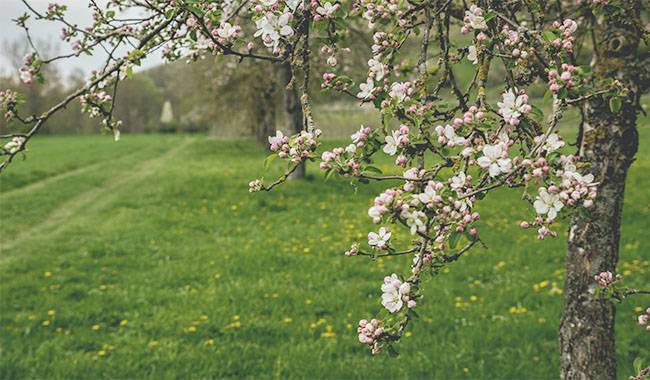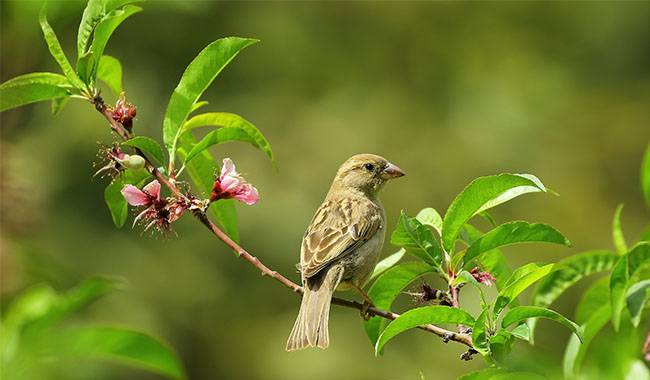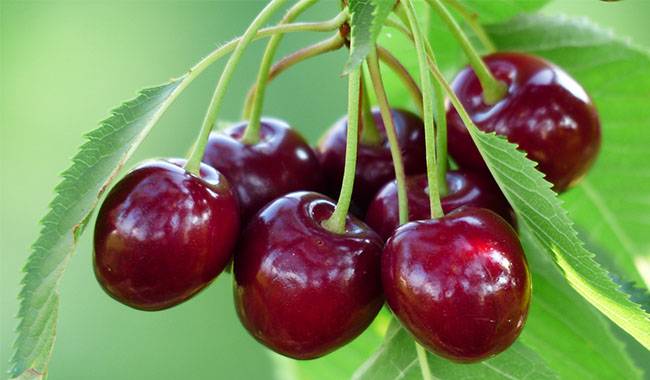
When I moved to my country house, I dreamed of having a bird’s nest in my garden. I wanted to hear the birds sing, know that they help you in the garden by eating caterpillars and small bugs, and pay them by giving them shelter and a hot water jug. However, the hassle and long hours of deciding which type of birdhouse to choose (because the size of the birdhouse determines which birds will live in it) made this wish not come true in time. And spring has passed. But it turns out that there are many birds where there is no nest for me, and they all find a place to live, singing in the morning, nibbling on the tender green of the bed, and then. Then they decided to eat my cherry tree.
Now I no longer dream of having a nest, but I wanted to know how to protect their crops from the cute little bird’s gourmets without hurting them and easier for myself. After searching the Internet and asking my friends, I sketched a list of possible options, one of which may be helpful for you. This article will learn how to protect cherry trees from birds.
HOW CAN YOU PROTECT YOUR CROPS FROM BIRDS?
Unfortunately, cherries and cherry trees and strawberries, blackberries, and buckthorn have to be protected from starlings and sparrows. In short, the struggle can drag on into late fall, so if there is something that needs protection, you can experiment so that next season, you know exactly the best way to preserve the fruits of their labor. In the meantime, here are the main methods of repelling birds
- One of the oldest ancestral methods of saving crops is the use of rustling objects. Pieces of cellophane, cellophane bags, or (if you can find them) film from old tapes will do the trick. The main thing is to make sure that these objects can be easily attached to branches and make an unusual sound to the birds as they fly in the wind.
- You can also scare the birds away by flashing them. Heavy night rain, ruined computer disks, reflective tape, aluminum foil, and refracted sunlight will scare away birds and keep them away from your garden.
- Covering young trees with lint from a bedsheet, aluminum foil, or simply an old sheet secured to the edges with clothespins is a reliable enough remedy.
- Very often, modern gardeners recommend spreading a fine net over the tree. In this case, there are temporary and permanent installation options, as well as material choices.
- Given that birds are scared off by the white color, a strip of white cloth or film fixed to the periphery of the canopy is a good solution. And in the case of strawberries, a piece of white cloth stretched along the bed.
- Some suggestions point out that birds do not like both blue and red colors. Therefore, you can try hanging or placing flags of specific colors in the vegetable garden.
- Homemade spinners made from plastic bottles are an interesting solution. Mills, spinning wheels, birds – moving in gusts of wind, scaring away sparrows and chasing away starlings – also decorate the garden, breaking the monotony of hot summer days with their cheerful fluttering.
- The smell of onions has a terrific effect. Sliced heads can be hung on the branches of young trees for a regular renewal.
- A novelty of recent years is the sound electronic scarecrow and megaphone that emits the sound of birds of prey, scaring away feathered pests with bright flashes of light by repeated taps or sirens.
- There are also special gels made from extracts of plants that are odorless to birds and emit repellent scents.
That’s all I could find. However, it’s not enough. So let’s start the experiment!
A LITTLE STATISTIC ABOUT BIRD FORAGING

There’s a reason our attitudes toward our feathered neighbors fluctuate from positive to negative. Sparrows, starlings, and even tits, while being helpers in spring and early summer, can become pests during crop maturity. However, if their good deeds are evaluated, it becomes clear that without birds, our gardens would be more difficult than with birds.
For example, a sparrow feeding its young may collect 500 to 700 insects per day, mostly crop pests. The list of such insects includes: apple blossom beetle, leafworm, bread turtle, may beetle, nectar silkworm caterpillars, and other unpleasant inhabitants of our gardens. In addition, in winter, sparrows feed on the seeds of plants, destroying a large number of weed seeds.
The starlings are no less industrious. In one day, the pair eats about 300 grams of insects and their larvae. Thus, according to scientists’ calculations, for a healthy garden, there must be 2 to 4 pairs of sparrows, 1-2 starling families and at least 2 pairs of tits working there, each pair of adult sparrows eliminating up to 400 pests per day.




